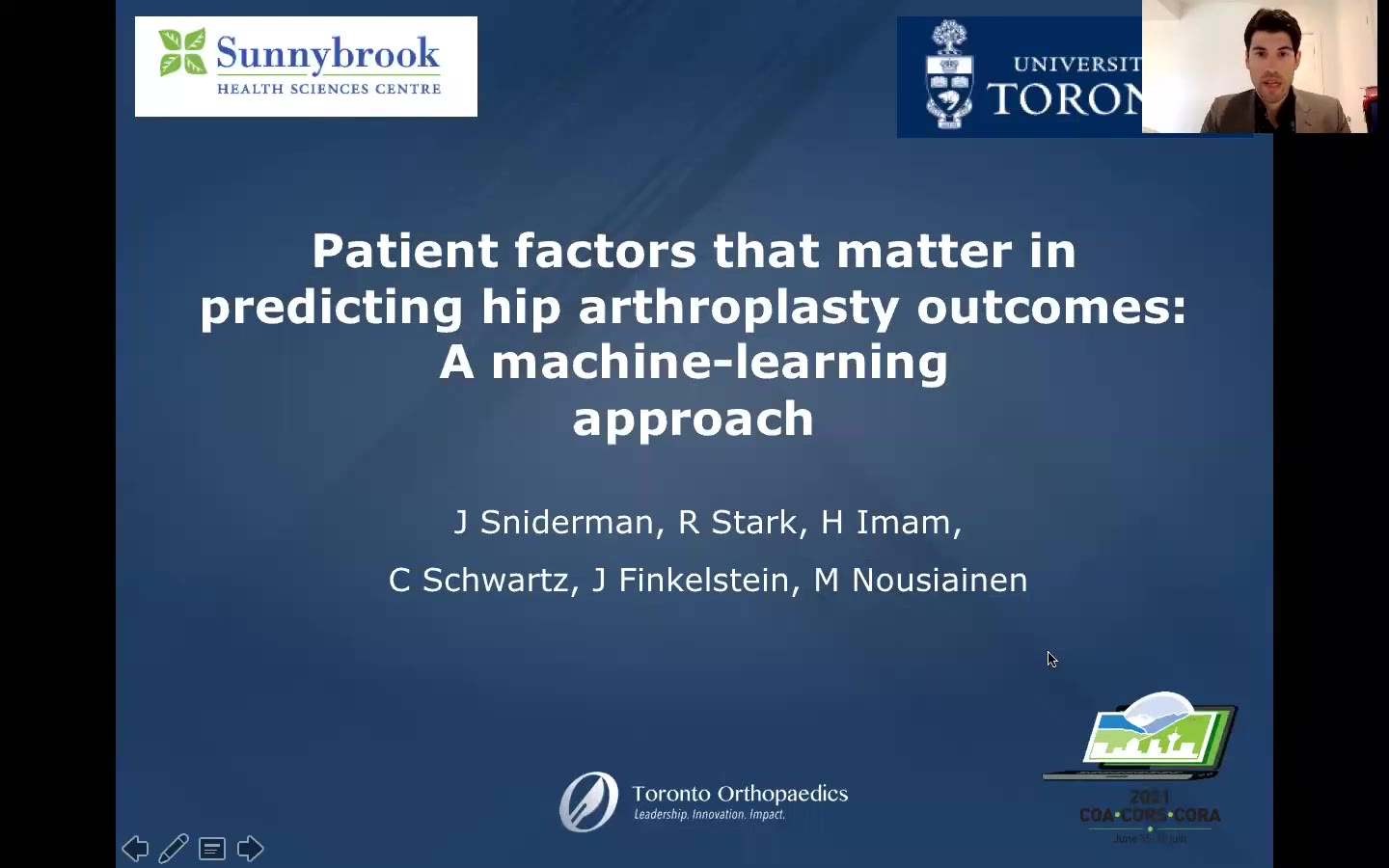Please login to view this media

- Talk
- 15/06/2021
- Canada
Patient Factors That Matter in Predicting Hip Arthroplasty Outcomes: A Machine Learning Approach
Description
The presentation is given by Jhase Sniderman, focusing on the significance of patient factors in predicting outcomes post hip arthroplasty, utilizing machine learning for enhanced predictive analytics. Sniderman introduces the topic, citing a concern that 10-15% of hip arthroplasty patients report dissatisfaction after surgery, and raises questions about the variability of outcomes among patients with similar profiles. He draws an analogy between evaluating athletes using data analytics and assessing surgical outcomes, emphasizing the need for more than just clinical parameters to gauge patient satisfaction effectively.
The study aims to explore how machine learning can pinpoint relevant patient and surgical variables that forecast post-operative functional outcomes specifically in total hip arthroplasty. The research involves 160 patients and utilizes data collected through extensive questionnaires focusing on various predictors. The main outcome measure is the Hip Disability and Osteoarthritis Outcome Score, with independent variables grouped into four categories: clinical/demographic variables, patient-reported health and habits, cognitive appraisal processes, and the surgical approach.
Sniderman discusses employing a supervised machine-learning algorithm called LASSO, which helped identify relevant predictors by optimizing regression coefficients to enhance prediction accuracy. The results reveal surprising factors, such as the negation of traditional predictors like smoking and age, while highlighting the impact of cognitive appraisal on recovery.
Key findings include that positive cognitive appraisal related to resilience and community support correlates with better outcomes, while negative comparisons to healthier peers hinder recovery. The anterior surgical approach, previously thought to be advantageous, was found to have a detrimental effect on patient outcomes in this analysis.
The model demonstrates a variance explanation of 31% for post-operative outcomes, aligning with notable standards in other medical predictive tools. The conclusion emphasizes the model's applicability to real-world patient populations and the potential for improving surgical decision-making through identified factors that can be modified in the perioperative period, ultimately working towards addressing the elements that negatively impact surgical outcomes. Sniderman acknowledges collaborators who contributed to the study and concludes with gratitude.